#Scottish heritage
Text

Old Dean Village is one of Edinburgh's architectural hidden gems
#Dean Path#Dean Village#Edinburgh#Scotland#architecture#mediaeval#half timbered#Scottish heritage#cobblestones
72 notes
·
View notes
Text
Whilst I avoid both going to bed and my academics, I thought it a good time to say that when an American says they're “restoring a language” or “of X ethnicity”, they don’t mean they're from X. They know their nationality, they know where they were born, that's not the point.
When someone says they're Irish and are from America, it's just shorthand for “Irish American”. We put everything in a shortened form here because we all know what we mean and collectively remove redundancy.
When we say we're learning Z language because we're X, we don't mean it in terms of exoticism. The only people who do that are ignorant kids and folks who are going through a cultural/identity crisis. The rest of us are trying to learn these languages because our predecessors lost them or had them trained out. It is a dead language to us because these parts of us have been killed off, that's why it's a revival.
While I do research, I often hear people say something around the lines that “You are where you're from, not where your predecessors are from” which is true, to a certain extent. I am an American, a U.S. citizen. If U.S. culture was a bit more similar to how most other places in the world did it, I would say that I was from X state, an Xian. Here, though, we are more defined by our subcultures; little pockets of pooling culture brought in from where we originally hale.
This probably wouldn’t be the case if most of us had come here out of a desire to be here rather than having been forced out of our homelands. My family came here around 1930 and our records say it was because of food insecurity caused by a failed crop (and a surprise frost). The folks who settled the U.S.? Genocidal assholes, fuck 'em.
But back to the point. When someone says they're trying to get in touch with their culture— we're not trying to be you. We're trying to get back what was forced out of the people before us in order to survive over here. Our families came here with what they had and our culture has changed throughout the years. St. Patrick's day is odd (especially since Patrick was colonizing Ireland) and is over the top; that is the point. Not a single one of us thinks that to be Irish is to be bathed in clovers, downing alcohol, and belting about rainbows. It's a noxious, loud, proud declaration that we're still here. It is, at least by its origins, a public protest.
#Ethnicity#culture#American#Irish heritage#Scottish heritage#(less mentioned but I was also thinking anout it while writing.)#It's really comdescending and rude how some people talk about those of us trying to learn.#You guys know that the folks you're complaining about-#The ones who think about Ireland and Scotland as magical fae-mess-#Those are literal children? You're making beef with kids. A bit weird my dude.#Though I do think a part of the issue is a langiahe and cultural barrier#Given that most places refer to nationalism the same way us Americans do our heritage#—That one miiight be down to the fact that this is a literal settler state. The people who colonized this place had the culture of bleach.#In order to live here- you kinda have to bleach away who you are and where you're from.#And if you cannot because where you're from comes with visually obvious characteristics#Then you're screwed.#America
7 notes
·
View notes
Photo

My family’s tartan pattern, created and registered in 2022.
It was inspired by the Colquhoun tartan in celebration of my mother’s paternal grandmother, my great-grandmother Bertha Irene Lawrence (née Cowan). The colours were chosen in reference to the colours of my father’s coat of arms.
#tartan#family identity#family tartan#colquhoun#clan colquhoum#cowan#family history#Scottish Canadian#Scottish#Canadian#Scottish Heritage#Clan
5 notes
·
View notes
Text
So I was talking to my friend who, unlike me, does not have Irish and Scottish heritage/blood and to them bagpipes are just "kinda okay"
So that answers a question I never asked.
I told them "you're lucky we're friends. Such a high offense......"
#bagpipes#bagpipes fuckin' SLAP my dude#seriously tho. put bagpipes in a song and i LOOSE MY MIND#have them play A REEL and ill GO BALISTIC#i fuckin' LOVE bagpipes#irish#irish blood#irish heritage#scottish#scottish blood#scottish heritage#thems fightin' words#and NO im not using scottish and irish as the same thing or interchangeably#i have family who are obsessed with genealogy so i can confirm its SO MUCH of BOTH#i may be amercian raised without or robbed of my heritage. but i know what it is and where im from
2 notes
·
View notes
Text
Stewart of Gal Lowav Virescit Vulanere Virtus Clan Badge

The Stewart of Gal Lowav Virescit Vulanere Virtus Clan Badge is an emblem of honor and heritage, rich in symbolism and tradition. Crafted with meticulous detail, it embodies the noble lineage and valorous spirit of the Stewart clan.
At its heart lies the rampant lion, a powerful symbol of strength, courage, and majesty, representing the clan's proud heritage and unwavering resolve. With its fierce countenance and regal bearing, the lion commands respect and admiration, reflecting the noble character of the Stewart lineage.
Encircling the lion are intricate Celtic knotwork patterns, intricately woven symbols of eternity and interconnectedness. These timeless designs speak to the enduring bond of kinship and the unbreakable ties that bind the clan together through the ages.
Adorning the badge are elements reminiscent of the Scottish highlands, such as thistles and heather, paying homage to the rugged beauty of the clan's ancestral lands. These natural motifs serve as reminders of resilience and perseverance, qualities that have defined the Stewart clan throughout its storied history.
Above the lion, a heraldic crest proudly displays the motto "Virescit Vulnere Virtus," Latin for "Courage grows strong at a wound," underscoring the clan's indomitable spirit and steadfast determination in the face of adversity.
The Stewart of Gal Lowav Clan Badge is not merely a symbol; it is a testament to the enduring legacy of a proud and noble lineage, a reminder of the virtues and values that have guided the clan through generations past and will continue to inspire future generations for centuries to come.
#Stewart of Gal Lowav#Clan Badge#Scottish heritage#Family crest#Heraldry#Celtic symbolism#Scottish pride#Lion emblem#Courage#Tradition#Ancestry#Scottish clans#Highland heritage#Symbolism#Tumblr post#Historical emblem#Virescit Vulnere Virtus#Scottish history#Clan motto#Tumblr tags
0 notes
Text

CLAN: The Epitome of Scottish Heritage with Luxury Kilt Outfits and Custom Tartan Design
Based in Edinburgh, Scotland, CLAN offers a luxurious selection of kilt outfits, bridal wear, traditional ceremonial items and gifts. Specialising in custom tartan designs, you can use our free online tartan design tool to create, share and wear your personalised tartan. Owned by Nick Fiddes, contact us at 0800 634 8640 for an authentic Scottish heritage experience. Visit: https://clan.com/
#Nick Fiddes#CLAN Edinburgh#Custom Tartan#Personalised Tartan#Luxury Kilt Outfits#Bridal Wear#Scottish Heritage#Traditional Scottish Clothing#Authentic Scottish Experience#Bespoke Tartan Design#Scottish Gifts
1 note
·
View note
Link
Tom Spiers plays and introduces Cruel Mother (Child Ballad)
#tom spiers#scottish heritage#folk song#story song#folk tales#folktales#fiddle#fiddle playing#fiddle players#violin#scotland#scottish
0 notes
Photo
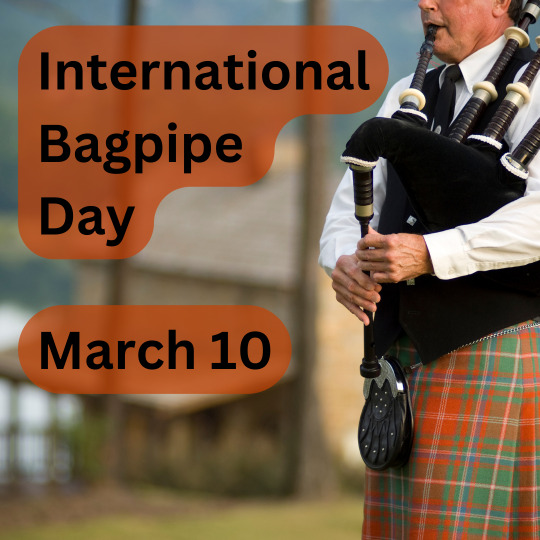
Happy International Bagpipe Day!
0 notes
Note
your posts about English folk culture being treated as esoteric within England reminded me of a conversation I had with my dad relatively recently. I was complaining about how much I hated doing scottish country dancing in P.E every year in school and he, having grown up in London, mentioned that he never did any kind of folk dancing in school and it really surprised me.
Having an Irish family and growing up in Scotland I just assumed that folk culture would be a big part of national identity in England because it def is in Ireland and scotland. I mean I grew up in the city and I went to a Catholic school where a lot of pupils didn't come from Scottish backgrounds so I'm sure my experience would be different from somebody who grew up in a smaller town or a rural area, but my school still dragged out the girls who could sword dance every year on burns day y'know
Also now I'm wracking my brain trying to remember all the English folk songs I know and realising that it's comparatively few next to the hoard of Scottish, Irish and American folk songs I've accrued over the past 2 decades. That's definitely partially just due to being connected to the cultures those songs come from and that American folk songs are generally quite a bit younger than the scottish & Irish ones, but it's still not something I've ever really thought about
yeah absolutely. it's something england -- and probably urban england and london especially -- has really lost touch with. a lot of my friends and colleagues are irish, and when the topic of things like irish dance comes up, it's always like "oh yeah i did a bit of that as a kid, everyone did" or "yeah i learned the whistle, obviously, but i stopped when i was eight" -- but there'd be no obviously about that here (even when people learn the recorder at school, it's not often trad tunes they're learning to play!)
i don't know if this is to do with the proportion of the population that's urban vs rural in england compared to ireland or scotland (not sure where wales is at with this, they have a strong song tradition but i don't know much about the welsh equiv of trad dance music nor tbh enough about the song tradition to say anything meaningful on the topic), or if it's a "survival of trad culture to spite oppressive dominant cultures" thing so england lost it due to lack of need to defend it, or if it's predominantly a class issue (but that wouldn't wholly explain schools/the national curriculum, particularly at primary level)... i think there's a lot of factors at work
but it's something i do notice because i spend time in those irish-dominated spaces where the attitude towards trad music and dance is so different. but then those are also often irish language communities, so they're specifically irish communities that are interested in their cultural heritage, and maybe that's not representative of the whole country. still, it feels like even people who aren't interested and haven't carried that interest through to adulthood were exposed to it in childhood in a way that many english people weren't because our equivalent traditions have been relegated to this very niche, marginalised (and potentially very rural) status
#sometimes i think i've learned an english folk song but then it turns out it's scottish#it just got written down by an english song collector who got rid of a lot of the more distinctively scottish features#RIP#if i start thinking about how little i know about welsh traditions#i'll get sad again about not knowing any of my dad's family except his brother#a lot of his family was from rhosymedre and llangollen and places like that#i've never even been there although i've been to other parts of wales#i hope to change that this year though. not for Heritage™ reasons but that's a bonus side effect i guess#i need to take a ferry across to ireland so i gotta go to north wales anyway so might as well make a party of it#answered#anonymous#english folk traditions
79 notes
·
View notes
Text

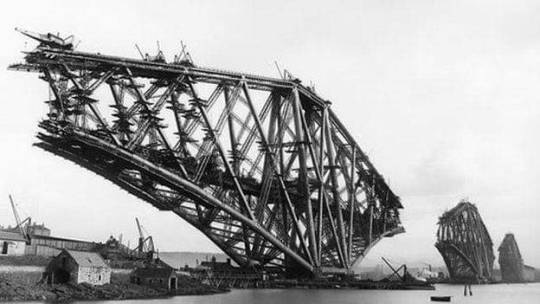



4th March 1890 saw the opening of the Forth Rail Bridge or to give it the correct title The Forth Bridge.
Before 1890 the only direct route between Queensferry and North Queensferry in the east of Scotland was the ferry across the Firth of Forth. The crossing was slow and often dangerous and the four ferries, Queen Margaret, Robert the Bruce, Mary Queen of Scots and Sir William Wallace, were sometimes prevented from sailing by the weather.
When the railways arrived a ferry further downstream, from Granton to Burntisland, was used to transport goods from Edinburgh to Fife. But a more efficient means of crossing was required and so Thomas Bouch designed a suspension bridge.
Work started on the first pier at Inchgarvie but it was abandoned after another structure by Bouch of a similar design, the Tay Bridge, collapsed in 1879. A new design by John Fowler and Benjamin Baker, incorporating three double cantilevers, was commissioned and work commenced in 1883.
Over the course of the next seven years almost 51,000 Tons of steel was used in the construction of the Forth Bridge (or Forth Rail Bridge as it is often known). On 4 March 1890 the bridge was officially opened by the Prince of Wales (later King Edward VII) who drove in the last of the 6,500,000 rivets. The total cost of the project was £3,200,000 and at least 57 lives.
Three 100m tall towers support the 2.5km structure and the two track railway is carried at a height of 48.2m above the Firth of Forth. With main spans of 521m, the Forth Bridge was, at the time of its construction, the world’s largest cantilever bridge. To this day it still ranks second.
Last year the bridge became the sixth Scottish landmark to be awarded Unesco World Heritage Site status.Scotland's other World Heritage Sites are New Lanark, St Kilda, the Old and New Towns in Edinburgh, Neolithic Orkney and the Antonine Wall.
The award puts it alongside the Pyramids of Egypt, the great Wall of China and the Sydney Opera House in terms of cultural significance.
40 notes
·
View notes
Text
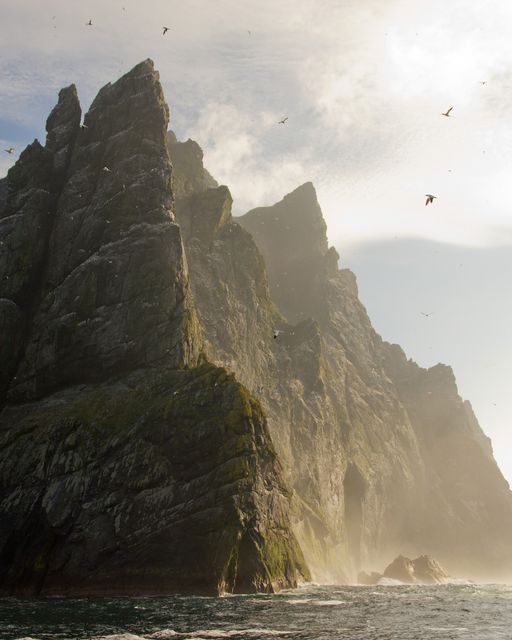
The crofters are gone, but St Kilda is still home to millions of seabirds
#St Kilda#Boreray#Outer Hebrides#Atlantic Ocean#gannets#puffins#sea stacks#Scottish heritage#remote#archipelago#UNESCO World Heritage site#seabirds#edge of the world#UK
122 notes
·
View notes
Text
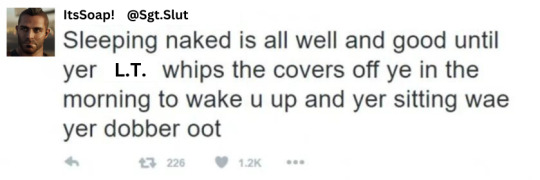
#john 'soap' mactavish#mw2#cod mw2#johnny soap mactavish#john soap mactavish#considering making a series of these because Scottish twitter is hilarious#deserves an UNESCO World Heritage designation tbh
131 notes
·
View notes
Photo

These are bagpipes. I understand the inventor of the bagpipes was inspired when he saw a man carrying an indignant, asthmatic pig under his arm. Unfortunately, the man-made sound never equalled the purity of the sound achieved by the pig.
- Alfred Hitchcock
#hitchcock#alfred hitchcock#quote#bagpipes#music#highlands#scotland#scottish#tradition#heritage#custom#femme#beauty#nature#culture#tartan
215 notes
·
View notes
Text

da banana is rocking dat kilt‼️
#my art#shovelwares brain game#shovelware’s brain game#swbg#dancing banana#based on the dialogue where he says he has scottish heritage teehee
83 notes
·
View notes
Photo


Who’s ready for more Scottish Elliott (festival edition)?
:)
#stardew valley#stardew valley mods#stardew valley elliott#sdv#sdv elliott#sv elliott#stardew valley scottish elliott#stardew mods#stardew mod previews#stardew valley festivals#upcoming mods#pixel art#character design#pixel portrait#stardew valley elliott marriage#scottish elliott#scottish tartan#clan lockhart#personal heritage
107 notes
·
View notes
Text
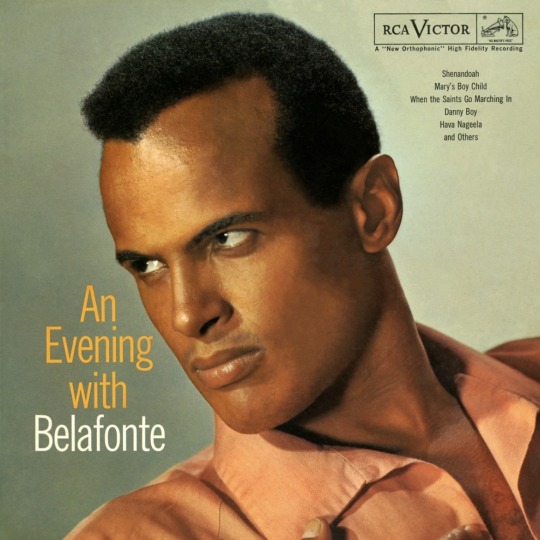
LP cover of Harry Belafonte’s album “An Evening with Belafonte” (1957).
The album featured his version of the Hebrew song “Hava Nageela”.
Its popularity led to Belafonte once referring to himself as “the most popular Jew to America”.
His version of the song is believed to be the most popular, with Belafonte claiming “most Jews in America learned that song from me”. It became a staple at Jewish celebrations, especially weddings.
Belafonte was of Sephardic Jewish, Afro-Jamaican, Dutch, and Scottish descent. Although he was raised Catholic, he honored his Jewish heritage throughout his career, between singing this song at nearly every one of his concerts, and playing the Jewish angel Alexander in the film “The Angel Levine” (1970).
#harry belafonte#music#jewish#jewish culture#jewish heritage#jewish history#jewish music#hebrew#Black Jews#Black culture#Black history#Jamaican Jews#Scottish Jews#Dutch Jews#Caribbean Jews#West Indian Jews#hava nagila#Hava Nageela#pop culture#jewish pop culture
46 notes
·
View notes